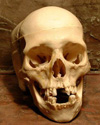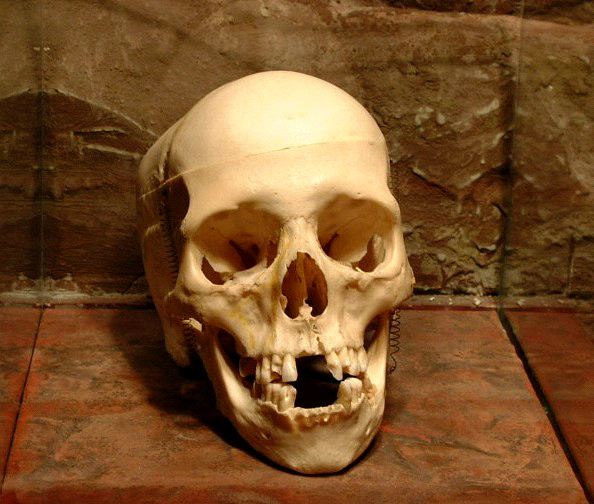The animal world
A trip back in time to the Devonian Period would initially reveal a peaceful world.
 (60 kb) Walking over the land, you might wonder if animals exist at all is this strangely quiet place. Then, along a nearby shoreline, a few animals make themselves known to you: invertebrates – like spiders, scorpions, and myriapods (a primitive type of insect) – are seen crawling on the ground. You are grateful, however, there are no mosquitoes; it will be quite some time before flying insects evolve!
(60 kb) Walking over the land, you might wonder if animals exist at all is this strangely quiet place. Then, along a nearby shoreline, a few animals make themselves known to you: invertebrates – like spiders, scorpions, and myriapods (a primitive type of insect) – are seen crawling on the ground. You are grateful, however, there are no mosquitoes; it will be quite some time before flying insects evolve!
A sudden splash attracts your attention. The underwater world appears to be teeming with life. Fish are abundant and diversified. Some species look familiar, having evolved into modern day representatives. Others seem bizarre, quite different in appearance from any of today’s fish, and you realize these are the fish species that eventually died out.
You also see many other animals in these Devonian waters. Available niches are occupied by various groups of invertebrates: corals, crustaceans, trilobites and other arthropods, molluscs with or without shells, medusas, sea worms, ascidians... Freshwater and marine environments alike are home to a rich and profuse variety of animal life, albeit quite different from the world we are familiar with today.

 (60 kb) Walking over the land, you might wonder if animals exist at all is this strangely quiet place. Then, along a nearby shoreline, a few animals make themselves known to you: invertebrates – like spiders, scorpions, and myriapods (a primitive type of insect) – are seen crawling on the ground. You are grateful, however, there are no mosquitoes; it will be quite some time before flying insects evolve!
(60 kb) Walking over the land, you might wonder if animals exist at all is this strangely quiet place. Then, along a nearby shoreline, a few animals make themselves known to you: invertebrates – like spiders, scorpions, and myriapods (a primitive type of insect) – are seen crawling on the ground. You are grateful, however, there are no mosquitoes; it will be quite some time before flying insects evolve! A sudden splash attracts your attention. The underwater world appears to be teeming with life. Fish are abundant and diversified. Some species look familiar, having evolved into modern day representatives. Others seem bizarre, quite different in appearance from any of today’s fish, and you realize these are the fish species that eventually died out.
You also see many other animals in these Devonian waters. Available niches are occupied by various groups of invertebrates: corals, crustaceans, trilobites and other arthropods, molluscs with or without shells, medusas, sea worms, ascidians... Freshwater and marine environments alike are home to a rich and profuse variety of animal life, albeit quite different from the world we are familiar with today.
Site map | Feedback | Links | Sources | Credits
The animal world
<< Spores by the millions | Life in the sea >>

Title: Homo sapiens sapiens
Author: Parc national de Miguasha
Sources: Parc national de Miguasha
Year: 2002
Description:
The appearance of humans is very recent in the history of the animal world. The latest discoveries indicate that the first lineages to eventually give rise to humans branched off from the big apes around 7 million years ago.


